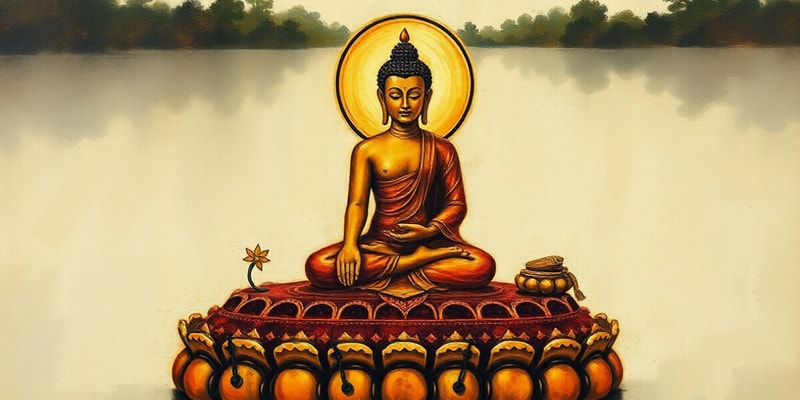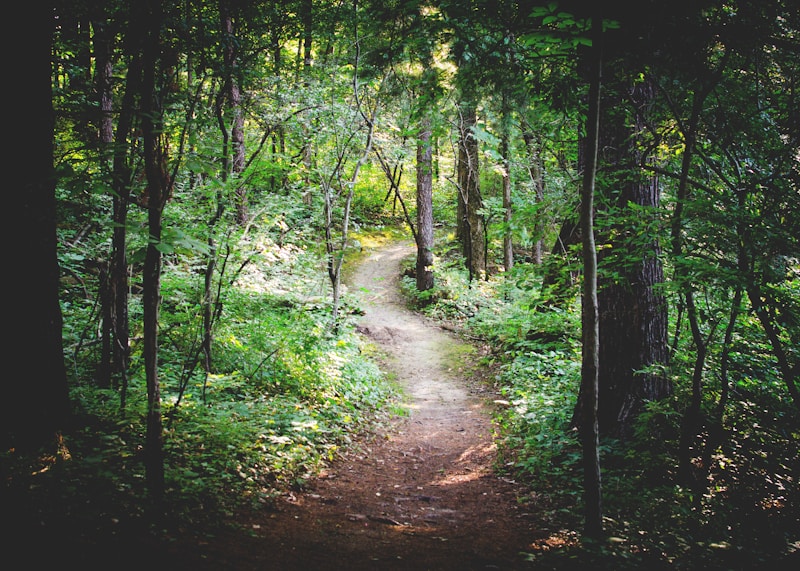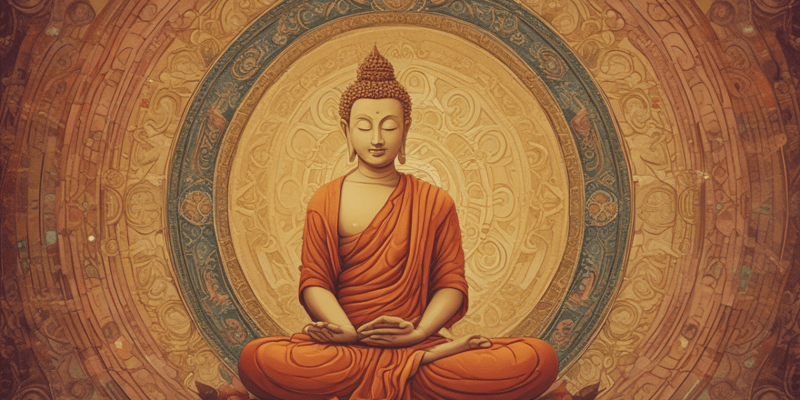Podcast
Questions and Answers
What does the lion symbolize in relation to the Buddha and the Sakyas?
What does the lion symbolize in relation to the Buddha and the Sakyas?
The lion symbolizes the Buddha's royalty and strength, as he is referred to as Sakya-simha, or 'lion among the Sakyas.'
In which form did the future Buddha enter his mother's womb according to tradition?
In which form did the future Buddha enter his mother's womb according to tradition?
The future Buddha entered his mother's womb in the form of a white elephant.
What factors contributed to Chunar being preferred as a quarry site for stone?
What factors contributed to Chunar being preferred as a quarry site for stone?
The quality of its stone and its convenient location near the river contributed to Chunar being preferred.
What cultural significance do the horse, bull, lion, and elephant have in Buddhist symbolism?
What cultural significance do the horse, bull, lion, and elephant have in Buddhist symbolism?
Signup and view all the answers
Which asterism is the bull associated with in the context of the Buddha's birth?
Which asterism is the bull associated with in the context of the Buddha's birth?
Signup and view all the answers
What was the average length range of Chunar blocks used for pillars?
What was the average length range of Chunar blocks used for pillars?
Signup and view all the answers
What findings did Jayaswal reveal about the composition of the Ashokan pillars?
What findings did Jayaswal reveal about the composition of the Ashokan pillars?
Signup and view all the answers
What is the significance of the horse in Buddhist sculpture?
What is the significance of the horse in Buddhist sculpture?
Signup and view all the answers
How did the modern stone cutters differentiate between types of stone in Chunar?
How did the modern stone cutters differentiate between types of stone in Chunar?
Signup and view all the answers
What do the lotus and wheel (chakra) motifs on Ashokan pillars symbolize?
What do the lotus and wheel (chakra) motifs on Ashokan pillars symbolize?
Signup and view all the answers
How did the status of the lion in ancient cultures relate to the rise of powerful kingdoms?
How did the status of the lion in ancient cultures relate to the rise of powerful kingdoms?
Signup and view all the answers
In what ways were elephants more important than lions in ancient India?
In what ways were elephants more important than lions in ancient India?
Signup and view all the answers
What role did Persian influence play in the art of the Maurya Empire?
What role did Persian influence play in the art of the Maurya Empire?
Signup and view all the answers
Why did kings have a vested interest in protecting the habitat of elephants?
Why did kings have a vested interest in protecting the habitat of elephants?
Signup and view all the answers
What is the significance of Ashoka's use of pillars for inscribing proclamations?
What is the significance of Ashoka's use of pillars for inscribing proclamations?
Signup and view all the answers
What motivated Sultan Firuz Shah Tughluq to transport the Topra pillar to Delhi?
What motivated Sultan Firuz Shah Tughluq to transport the Topra pillar to Delhi?
Signup and view all the answers
Describe the initial steps taken to prepare the Topra pillar for transportation.
Describe the initial steps taken to prepare the Topra pillar for transportation.
Signup and view all the answers
What role did the specially constructed carriage play in the transport of the pillar?
What role did the specially constructed carriage play in the transport of the pillar?
Signup and view all the answers
What significance did the inscription on the Topra pillar hold according to tradition?
What significance did the inscription on the Topra pillar hold according to tradition?
Signup and view all the answers
What was the final destination of the Topra pillar, and what was it known as after its installation?
What was the final destination of the Topra pillar, and what was it known as after its installation?
Signup and view all the answers
What is the significance of the transition from third person to first person in the inscriptions of the Achaemenids and Ashoka?
What is the significance of the transition from third person to first person in the inscriptions of the Achaemenids and Ashoka?
Signup and view all the answers
How does Greek and Persian influence manifest in the design of Ashokan pillars?
How does Greek and Persian influence manifest in the design of Ashokan pillars?
Signup and view all the answers
What are the primary differences in the structural features of Maurya and Persian pillars?
What are the primary differences in the structural features of Maurya and Persian pillars?
Signup and view all the answers
What role did the interactions between ancient India and Iran play in the development of Ashokan inscriptions?
What role did the interactions between ancient India and Iran play in the development of Ashokan inscriptions?
Signup and view all the answers
How did Ashoka’s use of dhamma inscriptions on the pillars transform their cultural meaning?
How did Ashoka’s use of dhamma inscriptions on the pillars transform their cultural meaning?
Signup and view all the answers
Study Notes
Archaeological Study of Stone Quarrying
- In 1990, a team of archaeologists from Banaras Hindu University, led by P. C. Pant and Vidula Jayaswal, explored megalithic structures near Baragaon (on the boundary between the Mirzapur and Varanasi districts of eastern UP) when they noticed evidence of ancient stone quarries, including many large cylindrical blocks of stone, in the nearby Chunar hills.
Detailed Study of Stone Quarrying and Stone Use
- Jayaswal went on to conduct a detailed study of stone quarrying and stone use in the Chunar and Sarnath-Varanasi areas, testing a number of hypotheses.
- Her analysis of the lithic (stone) material and inscriptions found in the area indicated that the hillsides of Chunar had been quarried for sandstone from the 3rd century BCE to the medieval period.
Low-lying Hill Quarry Sites
- The low-lying hill near Baragaon village was the main quarrying area in ancient times.
- Over 450 ancient quarry sites were identified in an area of some 15 sq km.
- Quarried blocks of stone were chiselled and dressed into cylindrical shape at Chunar itself.
- Many such blocks were found at the site.
- The quarries were active over the time frame.
Stone Quarrying Activities
- The quarried blocks of stone were chiselled and dressed into cylindrical shape at Chunar.
- This was done in order to roll them down the gently sloping hillside or down the small streams to the Ganga river.
- The ultimate destination of the Chunar stone included sites such as Sarnath.
Stone-Carving Workshops
- Stone-carving workshops were situated on the navigational route connecting Chunar and Sarnath.
- Excavations here revealed fragments of carved stone, and a chisel tester.
- A large cylindrical block of stone was also found before the excavations began.
- The location of such sites along water routes facilitated both the movement of the heavy blocks of stone and the finished products.
Studying That Suits You
Use AI to generate personalized quizzes and flashcards to suit your learning preferences.
Description
Explore the rich symbolism and cultural significance of animals in Buddhism, including lions, horses, and elephants. This quiz also covers the historical context and art of the Mauryan period, focusing on materials, techniques, and motifs used in significant sculptures and pillars.






